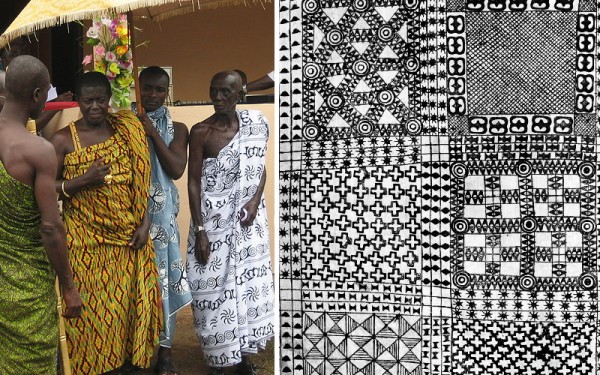
My sister, Elisa, has one of the coolest jobs in the world. She’s an art teacher. In the days when I was languishing at my desk job, I dreamed of being in her shoes – inspiring children, encouraging creativity, playing with paint, and being called “Ms. Foppiano.” (That’s my maiden name. I really like it, although I don’t miss spelling it for people: “F as in Frank, O, double P as in Paul, I, A, N as in Nancy, O.” What a drag.)
Today, I simply dream of Elisa taking over as Ava’s personal finger paint instructor. Oh, the fun they would have.
Elisa recently did a Ghanaian art project with her students.

Adinkra, or pattern stamping, is traditional with the Asante people of Ghana. They stamp patterns on cloth with a calabash shell and then wear the special cloth for different occasions.
- If the cloth is black or red, the adinkra is worn at funerals and big departures.
- If the cloth is brightly colored, the adinkra can be worn any time, but most commonly on Sunday and special occasions.

There are several Adinkra symbols, but the circle symbol they chose for art class means “Greatness.” (Here is more info on the symbols and their meanings)
How the traditional stamps are made:
They make the stamps from the calabash shell – a type of gourd or hard shelled fruit. They boil the bark of a tree with iron slag to make a dark dye. The stamps are then dipped into the dye to print the symbols. The dye dries to a glossy black finish. Liverpool Museums
Here’s an up close of some of the student’s renditions:

Fun!
Sure beats what I wear for special occasions.



11 Comments